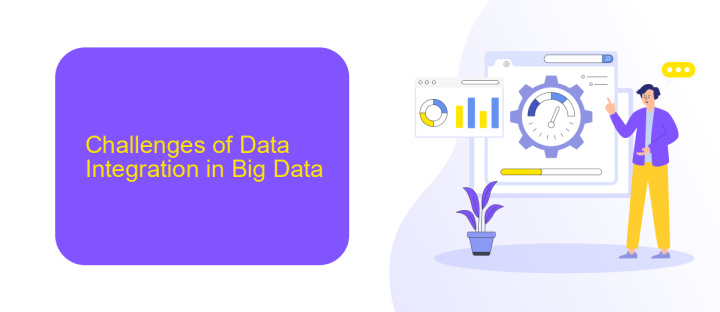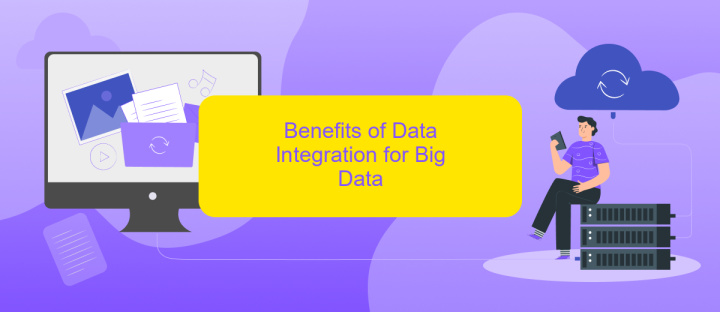Data Integration Big Data
Data integration in the realm of Big Data has become a critical aspect for organizations aiming to harness the full potential of their data assets. By seamlessly combining data from diverse sources, businesses can achieve more comprehensive insights, drive better decision-making, and enhance operational efficiency. This article explores the key strategies, challenges, and benefits of effective data integration in the Big Data landscape.
Introduction to Data Integration for Big Data
Data integration for big data involves combining data from multiple sources to provide a unified view. This process is crucial for organizations to make informed decisions, enhance operational efficiency, and gain competitive advantages. As data volumes grow, the complexity of integrating diverse data sources also increases, making robust solutions essential.
- Data Extraction: Collecting data from various sources such as databases, APIs, and flat files.
- Data Transformation: Converting data into a consistent format for analysis.
- Data Loading: Storing the transformed data in a data warehouse or data lake.
- Data Quality Management: Ensuring the accuracy and consistency of integrated data.
Services like ApiX-Drive simplify the data integration process by offering automated workflows and seamless connectivity between different applications and data sources. This enables businesses to focus on data analysis and decision-making rather than the complexities of data integration. As big data continues to evolve, efficient data integration solutions will remain a cornerstone for leveraging its full potential.
Challenges of Data Integration in Big Data

Data integration in big data environments presents several challenges, primarily due to the vast volume, variety, and velocity of data. One major challenge is handling heterogeneous data sources. Data often comes from different formats and structures, making it difficult to standardize and integrate effectively. Additionally, ensuring data quality and consistency across these diverse sources is a significant hurdle. Inaccurate or inconsistent data can lead to flawed insights and decisions, undermining the value of big data analytics.
Another challenge is the complexity of real-time data integration. As organizations increasingly rely on real-time data for decision-making, the need for seamless and immediate data integration becomes critical. Tools like ApiX-Drive can be invaluable in this context, offering automated workflows and integrations that simplify the process. ApiX-Drive allows businesses to connect various data sources and applications effortlessly, ensuring that data is updated and synchronized in real-time. This not only enhances operational efficiency but also supports timely and informed decision-making.
Benefits of Data Integration for Big Data

Data integration in the context of big data offers numerous benefits that can significantly enhance an organization's data management and analytics capabilities. By seamlessly combining data from various sources, businesses can achieve a more comprehensive and accurate view of their operations, customers, and market trends.
- Improved Data Quality: Integrating data from multiple sources helps in identifying and eliminating inconsistencies, ensuring that the data used for analysis is accurate and reliable.
- Enhanced Decision-Making: With a unified data set, organizations can perform more in-depth analyses, leading to better-informed strategic decisions.
- Increased Efficiency: Automated data integration processes save time and reduce the risk of human error, streamlining workflows and improving productivity.
- Scalability: Data integration solutions can easily adapt to growing data volumes, ensuring that businesses can scale their operations without compromising on data integrity.
- Cost Savings: By consolidating data storage and management, companies can reduce costs associated with maintaining multiple data systems.
Services like ApiX-Drive facilitate seamless data integration by providing user-friendly tools to connect various data sources and automate data workflows. This enables businesses to focus on deriving insights from their data rather than spending time on manual data management tasks. As a result, organizations can leverage the full potential of big data to drive growth and innovation.
Best Practices for Data Integration in Big Data

Effective data integration is crucial for managing big data and ensuring seamless data flow across systems. One of the best practices is to establish a clear data integration strategy that aligns with business objectives and technical requirements. This helps in identifying the right tools and methodologies for the integration process.
Another important practice is to ensure data quality and consistency. Implementing data validation and cleansing processes can significantly reduce errors and improve the reliability of integrated data. It's also essential to maintain data security and compliance with regulations to protect sensitive information.
- Automate data integration workflows using tools like ApiX-Drive to save time and reduce manual errors.
- Use scalable and flexible integration platforms that can handle large volumes of data.
- Regularly monitor and audit data integration processes to identify and resolve issues promptly.
- Ensure proper documentation and training for all stakeholders involved in the data integration process.
By following these best practices, organizations can enhance their data integration efforts, resulting in more accurate and timely insights from their big data initiatives. Leveraging tools like ApiX-Drive can further streamline the integration process, making it more efficient and effective.


Tools and Technologies for Data Integration in Big Data
Data integration in big data environments requires robust tools and technologies to handle the complexity and volume of data. Key technologies include ETL (Extract, Transform, Load) tools such as Apache NiFi and Talend, which automate the process of extracting data from various sources, transforming it into a suitable format, and loading it into a data warehouse or data lake. Additionally, Apache Kafka is widely used for real-time data streaming, allowing for efficient and scalable data integration.
Cloud-based integration platforms like ApiX-Drive offer a streamlined approach to setting up data integrations. ApiX-Drive provides a user-friendly interface to connect various applications and automate data workflows without extensive coding. This service supports a wide range of connectors, facilitating seamless data transfer between disparate systems. By leveraging such tools, organizations can ensure that their data integration processes are efficient, reliable, and scalable, enabling them to derive valuable insights from their big data assets.
FAQ
What is data integration in the context of Big Data?
Why is data integration important for businesses handling Big Data?
What challenges are commonly faced in Big Data integration?
How can businesses automate their data integration processes?
What are the key features to look for in a data integration tool?
Apix-Drive will help optimize business processes, save you from a lot of routine tasks and unnecessary costs for automation, attracting additional specialists. Try setting up a free test connection with ApiX-Drive and see for yourself. Now you have to think about where to invest the freed time and money!

